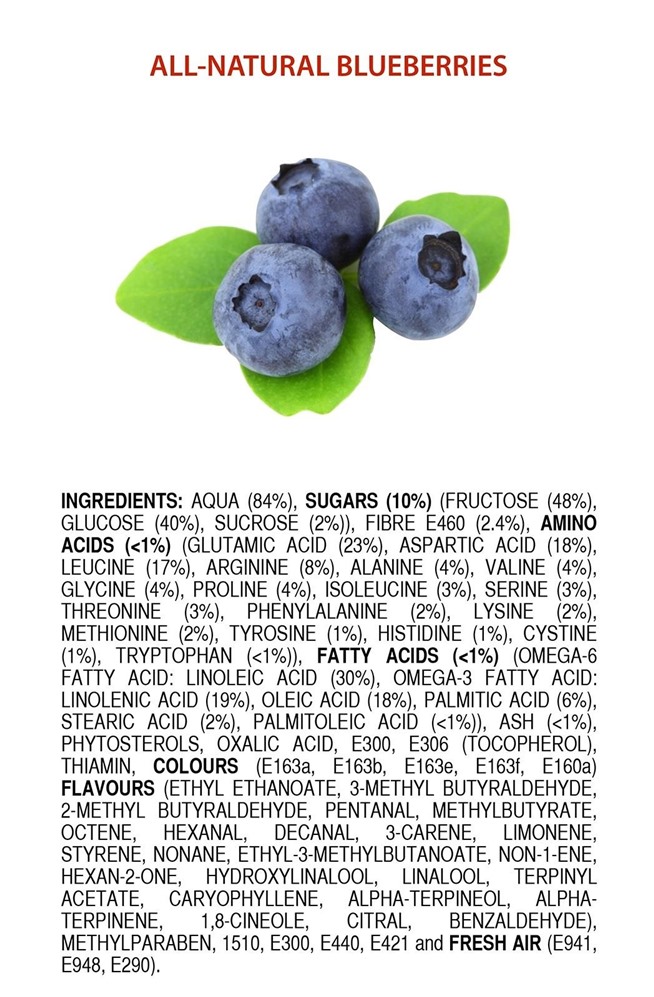IIFYM vs Carb Cycling
Replies
-
This content has been removed.
-
Oh I forgot about all the anecdotal evidence I used to support my claims. Keen observation...
http://www.ncbi.nlm.nih.gov/pubmed/11883916
It all boils down to how it impacts overall dietary adherence.0 -
How about the fact that I was a clean eater that restricted myself of my favorite food for a very long time, which lead me to an eating disorder? IIFYM gave me what I needed to get healthy, and still have freedom of eating my favorite foods. There is your scientific study.
Um... That's not a study that's anecdotal evidence.
Hello Kettle, this is pot....you are black
Oh I forgot about all the anecdotal evidence I used to support my claims. Keen observation...
Fair enough. You haven't used any. The one study you linked to stated that a lack of caloric restriction resulted in slower weight loss in diabetic participants. Novel discovery that.0 -
This content has been removed.
-
How about the fact that I was a clean eater that restricted myself of my favorite food for a very long time, which lead me to an eating disorder? IIFYM gave me what I needed to get healthy, and still have freedom of eating my favorite foods. There is your scientific study.
Um... That's not a study that's anecdotal evidence.
No chit.
So then why did you call it a scientific study?
Because you're demanding science behind whether something works or not. It obviously worked for me.
So you just try to fabricate science when people demand it and you don't have it?
I'm just going to keep eating my cupcake. This is pointless.0 -
That pretty much describes my diet. AKA: Food. :happy:by those standards, not sure what we can eat then
Um... Meat, dairy, grains, fruit, vegetables, legumes. It's really restrictive I know...0 -
need to resize dat image...by those standards, not sure what we can eat then
Um... Meat, dairy, grains, fruit, vegetables, legumes. It's really restrictive I know...0 -
by those standards, not sure what we can eat then
Um... Meat, dairy, grains, fruit, vegetables, legumes. It's really restrictive I know...
That is what was in the diet you posted......0 -
This content has been removed.
-
For me I consider dirty foods to be foods with refined sugar, soy products, and chemicals you can't pronounce.
 0
0 -
^^This a million times
Show me one scientific study with IIFYM having an advantage over cleaner eating.
And how is saying IIFYM doesn't have any scientific backing demonizing it? Or was it the gym rat comment? But yeah that's a lot of people that I've seen be able to implement it successfully and it's true you can out train many issues with diet.
When there are studies out there that say
you only need about 0.4 gr of fat per / pound of body weight
Or you only need about 0.8 gr of protein...
Or Carbs are non-essential
How is that not scientific backing??
They have just set up the parameters in which you can build your diet around macros
Like I said early, IIFYM could be renamed WHASAP, or "what has science actually proven", because that's really what the "diet" (eating philosophy) is all about. "The rules" come directly from scientific consensus; it is the product of PHD groupthink.0 -
Oh I forgot about all the anecdotal evidence I used to support my claims. Keen observation...
http://www.ncbi.nlm.nih.gov/pubmed/11883916
It all boils down to how it impacts overall dietary adherence.
Okay so you provided a link about rigid versus flexible eating, but I'd argue that the majority of diets are flexible. Rigid examples would be like the grapefruit diet and the hCG diet. Even diets considered strict like Dr. Joel Fuhrman's "Eat to Live" recommendations are still very flexible with a plethora of food choices.
A clean eating diet which labels food as good/bad and dictates what is or isn't allowed is considered to be flexible?0 -
And the straw man gets posted once again. Seriously???:indifferent:For me I consider dirty foods to be foods with refined sugar, soy products, and chemicals you can't pronounce. 0
0 -
Oh I forgot about all the anecdotal evidence I used to support my claims. Keen observation...
http://www.ncbi.nlm.nih.gov/pubmed/11883916
It all boils down to how it impacts overall dietary adherence.
Okay so you provided a link about rigid versus flexible eating, but I'd argue that the majority of diets are flexible. Rigid examples would be like the grapefruit diet and the hCG diet. Even diets considered strict like Dr. Joel Fuhrman's "Eat to Live" recommendations are still very flexible with a plethora of food choices.
Your opinions about the flexibility of most diets are irrelevant....unless you'd like to provide some kind of criteria for a baseline and then compare several diets to it, including IIFYM. Somehow I don't see that happening.0 -
Max, he hasn't defined clean eating but he defined dirty:For me I consider dirty foods to be foods with refined sugar, soy products, and chemicals you can't pronounce.
:indifferent:
Clean eating would be everything else.
Here is a bunch of stuff I can't pronounce but it was yummy. Hope I'll be okay.
ETA- SOMEONE BEAT ME TO IT.0 -
And the straw man gets posted once again. Seriously???:indifferent:For me I consider dirty foods to be foods with refined sugar, soy products, and chemicals you can't pronounce.
Just proof you cannot label something as dirty due to not being able to pronounce something.0 -
This content has been removed.
-
This content has been removed.
-
Oh I forgot about all the anecdotal evidence I used to support my claims. Keen observation...
http://www.ncbi.nlm.nih.gov/pubmed/11883916
It all boils down to how it impacts overall dietary adherence.
Okay so you provided a link about rigid versus flexible eating, but I'd argue that the majority of diets are flexible. Rigid examples would be like the grapefruit diet and the hCG diet. Even diets considered strict like Dr. Joel Fuhrman's "Eat to Live" recommendations are still very flexible with a plethora of food choices.
A clean eating diet which labels food as good/bad and dictates what is or isn't allowed is considered to be flexible?
So you have to be able to eat whatever you want how much ever you want for it to be flexible then? And limiting to a caloric intake or macronutrient ratio wouldn't qualify by that logic as rigid?
Well lets see here...
A diet which has no foods that are off limits vs. a diet that does... which one do you think is more flexible?0 -
Alight I'm bowing out. It's obvious this is non-productive. Peace!
Tuck your tail bud.0 -
Oh I forgot about all the anecdotal evidence I used to support my claims. Keen observation...
http://www.ncbi.nlm.nih.gov/pubmed/11883916
It all boils down to how it impacts overall dietary adherence.
Okay so you provided a link about rigid versus flexible eating, but I'd argue that the majority of diets are flexible. Rigid examples would be like the grapefruit diet and the hCG diet. Even diets considered strict like Dr. Joel Fuhrman's "Eat to Live" recommendations are still very flexible with a plethora of food choices.
A clean eating diet which labels food as good/bad and dictates what is or isn't allowed is considered to be flexible?
So you have to be able to eat whatever you want how much ever you want for it to be flexible then? And limiting to a caloric intake or macronutrient ratio wouldn't qualify by that logic as rigid?
It's less rigid than avoiding a kit-kat because you think it'll get you a tiny step closer to developing diabetes...speaking of disordered thinking.0 -
Bye:drinker: :drinker:0
-
It's absurdly unproductive. It's quite a group think. cheers.Alight I'm bowing out. It's obvious this is non-productive. Peace!0 -
F*** it, show me one study with IIFYM having an advantage over any other diet.
Having no disadvantage is a clear advantage, given the flexibility provided.
However:
http://www.ncbi.nlm.nih.gov/pubmed/17536194
Food is food. And that study was done before Trans Fats were removed from fast food.0 -
I know IIFYM has gained a lot of popularity lately, but most the people I know using it are gym rats that want to be lazy dieters.
And I am not a "lazy dieter". 90% of the foods I eat daily are "clean" and then I treat myself with junk for the other 10%. I lift heavy weights and I am at the gym everyday, because I enjoy it. There is nothing lazy about that.
You're an exception to the rule, but saying the exception proves the rule is a logical fallacy. And admittedly I haven't done any statistics on it, but that's what I see. Anyone eating clean (and clean is subjective as well) 90% of the time is doing great, but IIFYM allows you to eat dirty 100% of the time.
sorry but you're incorrect
it's impossible to hit your macros without very careful meal planning, and that means including a lot of food that clean eaters categorise as clean. You have to be even more careful with your meal planning to fit high carb high fat low protein foods into your day
your opinion represents the knee-jerk reaction to IIFYM which is "OMG it means eat what you like!!! that's terrible!!" no, it doesn't mean eat what you like. If I were to just eat what I wanted all day, I'd be way over on carbs and way under on protein.... and at that point eating more protein (even from eating pure whey isolate) would put me over my calorie goal, because 1g protein = 4 calories. so I'd fail at IIFYM eating what I want each day......... and additionally, that's far from 100% dirty.... I'm assuming by "dirty" you mean "junk" food that's typically high fat high carb low protein.......... NO you can't eat that 100% of the time with IIFYM .... because *newsflash*!!! it would never actually fit your macros!!!
I have to put a lot of effort into meal planning and preparation to hit my protein goals without going over on fat and carbs.
What IIFYM does is eliminate the idea of forbidden foods... you can eat small servings of any food you want *so long as it fits your macros*...... well getting high fat high carb low protein foods to fit your macros requires very careful planning. Hardly what I'd call lazy....0 -
Once iifym became more formal and less of an expression, the typical recommendation was to set discretionary intake to 20% of total calories with 80% coming from nutrient dense and minimally refined foods.
As a side effect of this, it becomes increasingly difficult to consume high amount of refined sugar when the discretionary allotment automatically puts a ceiling on it.
As with typical rebuttals to iifym, they don't understand iifym.
That misunderstanding isn't the diets fault, it's the people parading their ice cream and pop tarts who indirectly give that impression.0 -
I asserted once, here, that I suspected that the REAL difference between IFFYM and paleo/primal/EtL/SB/clean eaters etc. was, in large part, perception, and a bit in what "junk" is chosen for the 10-20%. I'd say I eat "clean" about 80-90% of the time. And then I have wine and junk food. I suspect my junk food may differ from some here (based on the proliferation of pop tart posts), but I suspect that for many of us, the bulk of our diets may be quite similar.And I am not a "lazy dieter". 90% of the foods I eat daily are "clean" and then I treat myself with junk for the other 10%. I lift heavy weights and I am at the gym everyday, because I enjoy it. There is nothing lazy about that.
But that assertion, when made, was resoundingly booed on here. :flowerforyou:
cheers0 -
Here's an example of what I mean....
macro goals (by calories, not volume): 40% carb, 30% protein, 30% fat
a couple of slices of pizza would use up a really big chunk of my fat and carb allowances, without giving me very much protein. In order to compensate for this (because I want to go out to a pizza restaurant one evening) I have to, for the rest of the day, meet my protein goal without taking in very much fat or carbs, because I know I'm going to use those allowances for the pizza. So, what can I eat that's high in protein and low in fat and carbs........ let's see........ omelet made from egg whites and green vegetables.... chicken breast salad with only a little dressing..... protein powder smoothie with mostly protein powder and not much else.... all "clean" foods...... well I don't eat pizza very often for that very reason. I'd rather get my fat from egg yolks, full fat dairy, oily fish, nuts and avocado, because they taste good and are full of essential fatty acids and fat soluble vitamins. And I love chocolate so I need to leave some of my carb allowance for that. And not forgetting the carb choices that I love which are rich in micronutrients such as cereal bars and fruit. And ice cream sometimes. So.... it's a good way to enjoy eating pizza sometimes but really most of the time pizza isn't worth the trouble. What so-called "junk""unclean" foods I choose to fit in will vary from day to day because I like variety and it's impossible to fit them all in to a single day.
That's how IIFYM works.0 -
BINGO.Once iifym became more formal and less of an expression, the typical recommendation was to set discretionary intake to 20% of total calories with 80% coming from nutrient dense and minimally refined foods.
As a side effect of this, it becomes increasingly difficult to consume high amount of refined sugar when the discretionary allotment automatically puts a ceiling on it.
As with typical rebuttals to iifym, they don't understand iifym.
That misunderstanding isn't the diets fault, it's the people parading their ice cream and pop tarts who indirectly give that impression.
As always, side steel nails it.
I'd add: there are quite a few who claim to adhere to IIFYM don't really understand it either (as evidenced by some open diaries of some folks).
Also, remember that iifym.com offers a variety of macro ratios, including low carb.
And, as you've noted earlier, a short, older woman wanting to lose a bit of weight may find her "discretionary calories" are quite quite limited, as are her carbs, even with a 40/30/30 ratio.
I truly think there's very little difference between the primary arguers here.0 -
Sounds pretty clean.Here's an example of what I mean....
macro goals (by calories, not volume): 40% carb, 30% protein, 30% fat
a couple of slices of pizza would use up a really big chunk of my fat and carb allowances, without giving me very much protein. In order to compensate for this (because I want to go out to a pizza restaurant one evening) I have to, for the rest of the day, meet my protein goal without taking in very much fat or carbs, because I know I'm going to use those allowances for the pizza. So, what can I eat that's high in protein and low in fat and carbs........ let's see........ omelet made from egg whites and green vegetables.... chicken breast salad with only a little dressing..... protein powder smoothie with mostly protein powder and not much else.... all "clean" foods...... well I don't eat pizza very often for that very reason. I'd rather get my fat from egg yolks, full fat dairy, oily fish, nuts and avocado, because they taste good and are full of essential fatty acids and fat soluble vitamins. And I love chocolate so I need to leave some of my carb allowance for that. And not forgetting the carb choices that I love which are rich in micronutrients such as cereal bars and fruit. And ice cream sometimes. So.... it's a good way to enjoy eating pizza sometimes but really most of the time pizza isn't worth the trouble. What so-called "junk""unclean" foods I choose to fit in will vary from day to day because I like variety and it's impossible to fit them all in to a single day.
That's how IIFYM works.
My own eating isn't hugely different except I'd opt for a whole wheat pizza, or, gasp, the much maligned cauliflower one so I can have it more often, and I don't really do protein powders. And, due to my age and hormonal status (perimenopause) my carbs are set lower, and the bulk of them come from vegetables rather than grains. But otherwise, the true IIFYM successes, spend a lot of time considering how to best build their diet to maximize nutrients within the three primary parameters. Others opt to do with with a different framework, but end up in a similar place, I suspect.
I also suspect a lot of the "difference", again, returning to perspective, has to do with people's histories and relationships with food. Thus, the various reactions to words like "cheat", "junk" etc.
But, in the end, the successes likely have pretty similar diets, 90% of the time, anyway.0
This discussion has been closed.
Categories
- All Categories
- 1.4M Health, Wellness and Goals
- 397K Introduce Yourself
- 44.2K Getting Started
- 260.9K Health and Weight Loss
- 176.3K Food and Nutrition
- 47.6K Recipes
- 232.8K Fitness and Exercise
- 456 Sleep, Mindfulness and Overall Wellness
- 6.5K Goal: Maintaining Weight
- 8.7K Goal: Gaining Weight and Body Building
- 153.3K Motivation and Support
- 8.3K Challenges
- 1.3K Debate Club
- 96.5K Chit-Chat
- 2.6K Fun and Games
- 4.5K MyFitnessPal Information
- 16 News and Announcements
- 18 MyFitnessPal Academy
- 1.4K Feature Suggestions and Ideas
- 3.1K MyFitnessPal Tech Support Questions








